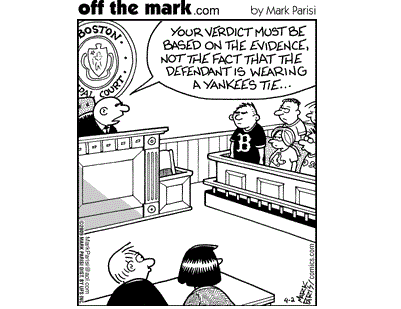Rushkoff's book is structured as "Ten Commands for a Digital Age," but the pivotal concept is the idea that technology itself has bias--"a leaning, a tendency to promote one set of behaviors over another." If you do not acknowledge and understand the bias, you are doomed to be controlled by the medium. As Rushkoff writes, "Only by understanding the biases of the media through which we engage with the world can we differentiate between what we intend, and what the machines we're using intend for us--whether they or their programmers even know it."

Ever since that session, I have been thinking about "school" as the "machine we're using," and trying to discern what its biases are. So, for example, in the blog post about "The Hedgehog and the Fox" (which generated a remarkable amount of interest), I was exploring the idea that we are biased toward (and unaware of it) "hedgehog" learners, and that we have constructed a world that leans toward people who exhibit that trait in schools. Not a bad thing, necessarily, but a bias nonetheless, and a bias that we might want to re-evaluate in view of how many "foxes" we have as learners.
Right now, I am wondering whether there is another "bias" that we have--we are much more inclined to favor patterns in student's thinking over anomalies. And, furthermore, we favor students who exhibit pattern recognition over those who are inclined toward identification of anomalies.
I am thinking about this, in part, because I am presently teaching someone who is one of the most adroit anomaly identifiers I have come across in recent years. For example, when we are reading a short story she immediately spots the place in the text that does not fit the pattern that has been established. However, she does not do it by seeing the pattern and then noting something is happening outside it.
Look at this video, and then let's talk about what you saw.
I actually remember sitting with my children and watching this segment of the show when it would come on and really loving it. But, notice the bias. It is called "Three of these Kids" and then after identifying how the three kids playing baseball form a pattern, only then do we establish which of these kids is "doing his own thing." My student, however, would be the person who not only would not identify the pattern first and THEN go to the anomalous football player, she would just possibly identify that one of the kids is left-handed (the upper left) and all the others are right handed. She is also extraordinarily good at making predictions when it comes to guessing what will come next based on what has come before. I cannot tell, however, if this is because of her skill with anomalies or because she also happens to work intuitively as well.
This has caused me to start to monitor how many times I ask questions that are patterned-based rather than anomaly-based. How often do I work inductively where I start with observations of data, record them and then look for patterns? How often do I ask questions about a text that are really about connecting different passages because I am trying to establish a pattern that I think will promote understanding? And it will promote understanding! But, I think I need to take a tip from Doug Rushkoff and be aware of the bias that I have--and I think most of us have--toward pattern recognition. How does that affect the way we run our classes? How does it affect the way we create tests and other forms of assessments? I am not saying we should stop teaching pattern recognition, only that it would be good to notice that we have that cognitive and epistemological bias (just as we favor analysis over intuition) and that it may give us a clue about some kids who are "doing their own thing" in our classrooms.
Fantastic, David! I've really been struggling with how to create more room for students to do their own things. With seniors, I'm much more generous than I am with juniors, and I know I am harming my juniors in the process. It is easier to fall back on my biases, but that is alarming when I know what my behavior is creating. Thanks!
ReplyDeleteI think it is much easier to reinforce the student doing his/her own thing when students are writing frequently; it is much harder to craft the context that allows students to appreciate the anomalous or intuitive leap of an "own-thinger" in the course of conversation in class.
ReplyDeleteIn class, I often feel like a mason, applying the fixitive between comments that allows some structure to be built; in the one-on-one nature of response to writing I feel free to wonder about what I've read.
Added thought: our biases lean toward order in the face of the chaos high school and personal development visit on our students; put simply, most of the time routine is our friend.